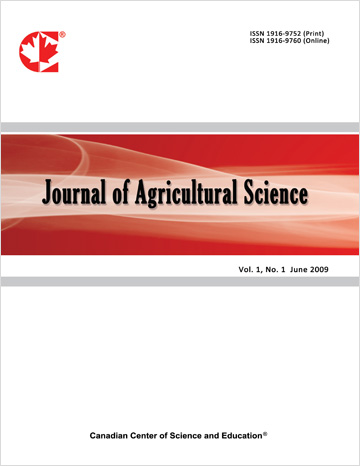Effect of Nitrogen and Potassium Fertilization Doses on Elephant-Grass Genotypes for Energy Purposes
- Wanessa Francesconi Stida
- Brunno de Oliveira Almeida
- Rogério Figueiredo Daher
- Cássia Roberta de Oliveira Moraes
- Ana Kesia Faria Vidal
- Rafael Souza Freitas
- Flávio Dessaune Tardin
- Bruna Rafaela da Silva Menezes
- Eduardo Peres Furlani
- Marcelo Vivas
Abstract
In view of the current global energy landscape, to develop alternative energy mechanisms to the oil has become essential. For that, biomass as well as the use of elephant-grass present themselves as attractive choices for energy purposes. That culture has a high growth prospect, as it contains characteristics such as high production, biomass quality, and high photosynthetic capacity. The purpose of this work was to assess the response of eight elephant-grass genotypes to nitrogen and potassium fertilization from the evaluation of morpho-agronomic traits. It was used a randomized block experimental design with three replications in the factorial scheme within a subdivided plot composed of principal factor (plots): genotypes and secondary components (subplots): potassium (2 levels) × nitrogen (3 levels)—200 × 400, 200 × 1000, 200 × 1600, 500 × 400, 500 × 1000, and 500 × 1600 kg ha-1. There was an adjustment of first degree linear model of the regression for all traits in at least one genotype. For DMP, the Capim Cana D’África, CPAC, and IJ 7139 genotypes indicated an inversely proportional response to the increasing of N in the fertilization. The response according to the N increasing in the fertilization was directly proportional for the CPAC genotype in relation to the NP, and for the Cana D’África, CPAC, and IJ 7139 genotypes in relation to the ALT. For SD, the CPAC and Vruckwona genotypes showed a positive effect on the increasing doses of N, and the IJ 7139 genotype, a negative correlation. The results are quite promising and ensure the use of the eight elephant-grass genotypes as an alternative source for biomass production.
- Full Text:
 PDF
PDF
- DOI:10.5539/jas.v10n10p446
Journal Metrics
- h-index: 67
- i10-index: 839
- WJCI (2023): 0.884
- WJCI Impact Factor (2023): 0.196
Index
- AGRICOLA
- AGRIS
- BASE (Bielefeld Academic Search Engine)
- Berkeley Library
- CAB Abstracts
- ChronosHub
- CiteSeerx
- CNKI Scholar
- Copyright Clearance Center
- CrossRef
- DESY Publication Database
- DTU Library
- e-Library
- EBSCOhost
- EconPapers
- Elektronische Zeitschriftenbibliothek (EZB)
- EuroPub Database
- Excellence in Research for Australia (ERA)
- Google Scholar
- Harvard Library
- IDEAS
- iDiscover
- Jisc Library Hub Discover
- JournalTOCs
- KindCongress
- LIVIVO (ZB MED)
- LOCKSS
- Max Planck Institutes
- Mendeley
- MIAR
- Mir@bel
- NLM Catalog PubMed
- Norwegian Centre for Research Data (NSD)
- Open J-Gate
- OUCI
- PKP Open Archives Harvester
- Polska Bibliografia Naukowa
- Qualis/CAPES
- RefSeek
- RePEc
- ROAD
- ScienceOpen
- Scilit
- SCiNiTO
- Semantic Scholar
- SHERPA/RoMEO
- Southwest-German Union Catalogue
- Standard Periodical Directory
- Stanford Libraries
- SUDOC
- Swisscovery
- Technische Informationsbibliothek (TIB)
- Trove
- UCR Library
- Ulrich's
- UniCat
- Universe Digital Library
- WorldCat
- WRLC Catalog
- Zeitschriften Daten Bank (ZDB)
Contact
- Anne BrownEditorial Assistant
- jas@ccsenet.org
